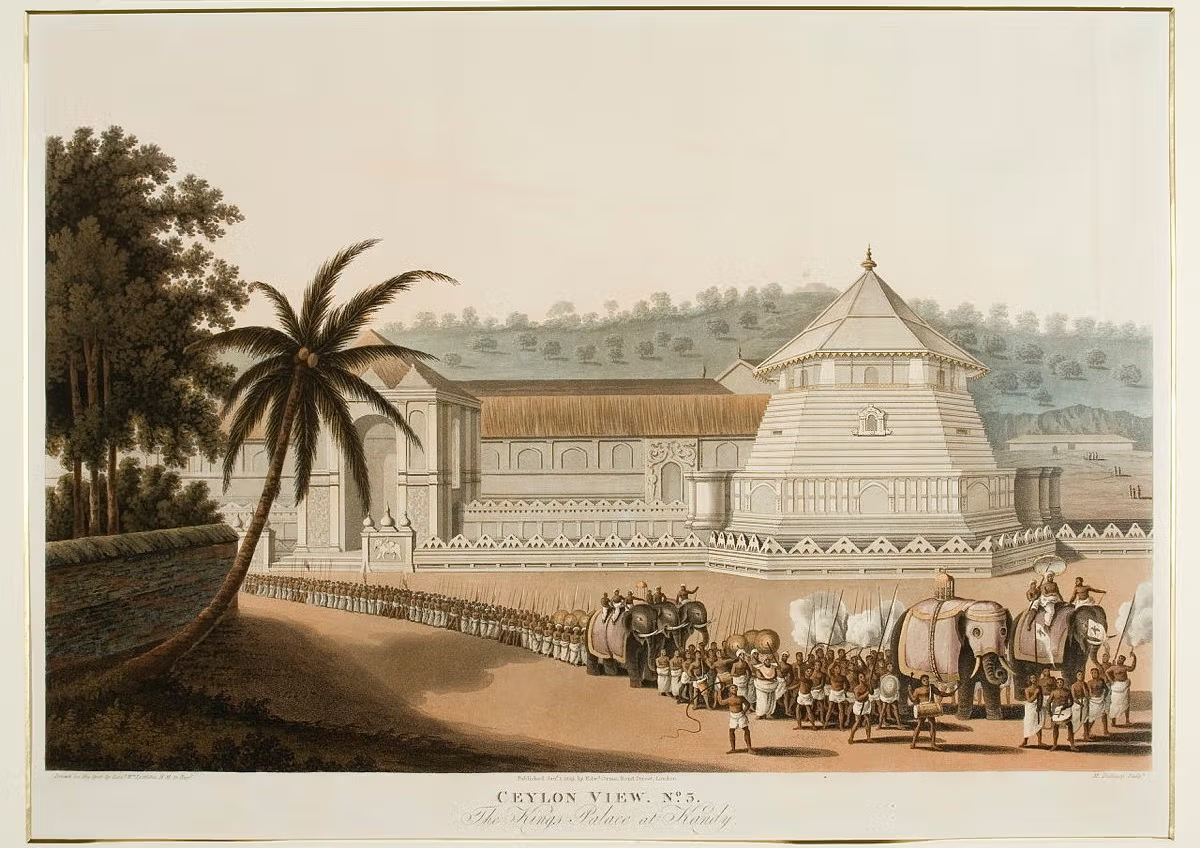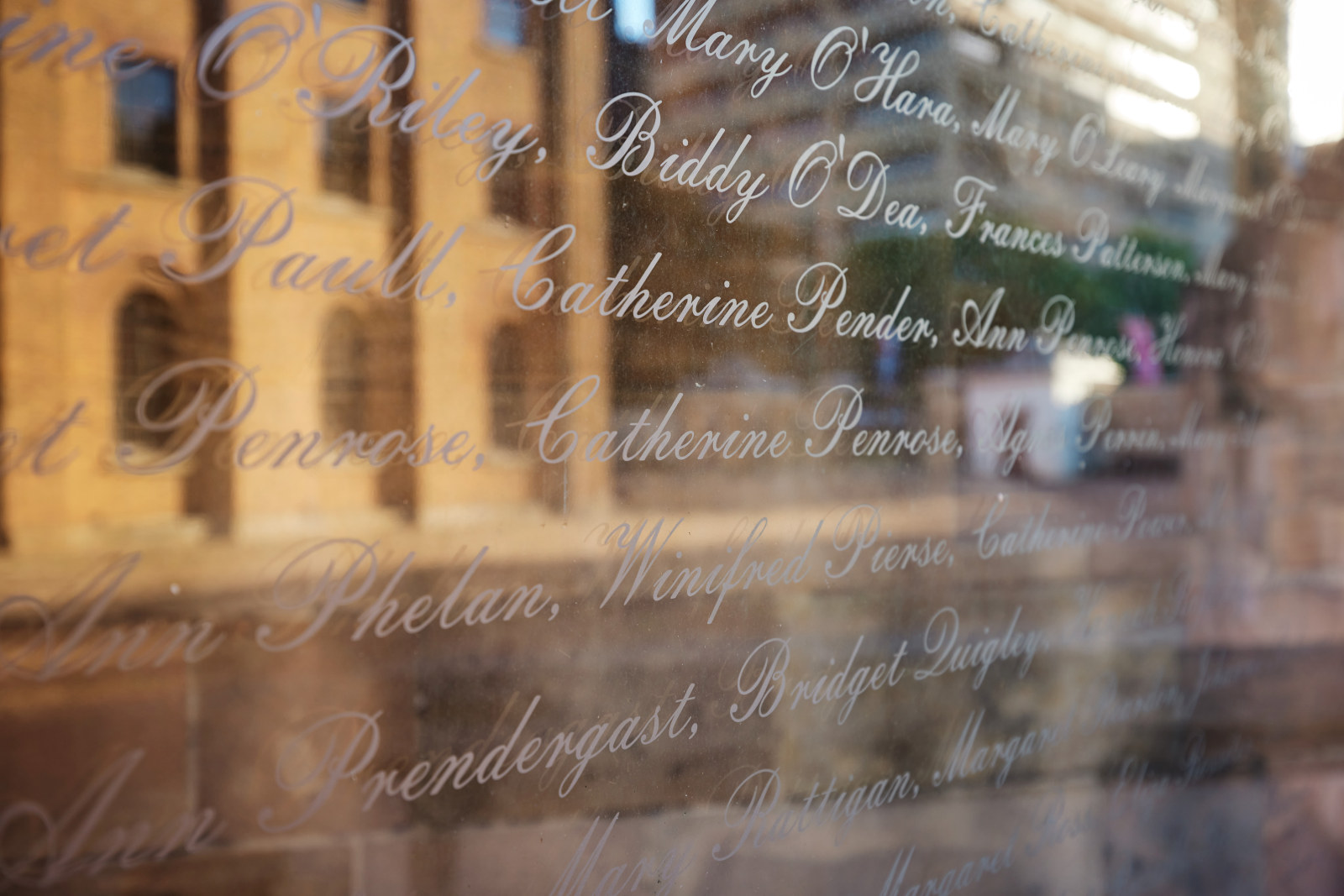Feeding the confined
Dining in the Immigration Depot and Asylum at Hyde Park Barracks
Hyde Park Barracks is best known for its convict history, and convict food has been covered on The Cook and the Curator blog before, but that is just the beginning of the food story of this intriguing place. Kim Connor, University of Sydney archaeology honours student, tells us what she’s discovered about rations and eating during the women’s era of Hyde Park Barracks’ history.
Like many institutions, the female Immigration Depot and the Asylum that occupied Hyde Park Barracks between 1848 and 1887, left behind a lot of official records and documents which survive today in the State Archives Collection1. Historians use such records to uncover details of the lives of the inhabitants, but at the Barracks, tens of thousands of objects left behind beneath the floors provide an even clearer picture of daily life. In 1980-81, archaeologists found a trove of personal items which had been hidden, lost or discarded by the women of the depot and asylum.
My Bachelor of Arts Honours thesis in archaeology is entitled ‘Feeding the Confined’, and I have been looking at the animal bones found at Hyde Park Barracks to see what they can tell us about the rations and dining habits of the women who lived there.
The two most common types of meat listed in the documentary sources are mutton and beef and the bones left behind by the women confirm that is what they were eating. By studying the bones, I have also discovered the unofficial ways that the women supplemented and varied their diets. One of the big surprises has been how much evidence there is for meat that was not on the official ration: rabbit, chicken, duck, oysters and even crab! Explaining why there is a difference between the archaeological record and the historical sources is key to understanding how these institutions worked, and the experience of the women who lived there.
Rations in the institutions
There is surprisingly little documentation to tell us about what the women in the Immigration Depot were eating, but some information can be gleaned from a newspaper report published in the Sydney Morning Herald in August 1850 which described the daily ration:
1 lb. meat, 1 lb. bread, 1 lb. vegetables, ¼ oz. tea, 1½ oz. sugar, ½ oz. salt and ½ oz. soap2
This is similar to the ration in the Destitute Asylum which was 1 lb. uncooked meat, including bones, 1 lb. bread (but the women got a 2 lb. loaf every other day), tea and sugar. When the meat was boiled, which it was most days, the women got a pint of soup made with vegetables and the liquid the meat was boiled in. When the meat was roasted they got roast potatoes but no soup. Dripping, the fat scooped from the top of the soup, was available for anyone who wanted it to put on their bread.
As part of this project I wanted to get a better idea of how much food the women actually received each day, so I reconstructed the ration according to the documentary sources (see picture above). It has 450g of bread, 450g of raw meat including bones, 450g of vegetables, 7g of tea (about three tea-bags), 15g of salt, 43g of sugar and some pepper. In terms of quantity, it seems to be enough food to have kept the women going, but imagine the monotony of eating the same thing every day, maybe for years at a time!
Daily meals
The women of the Destitute Asylum got three meals a day: breakfast, dinner and supper. There are no records describing what meals were served in the Immigration Depot, but they were probably very similar. For breakfast, the women of the Asylum had bread and dripping, with black tea made from 1/10 oz. of tea and ¾ oz. of sugar.
For dinner, the main meal of the day, they had either boiled or roasted meat. The meat was supposed to be mutton on Sunday and beef on the other days, but the contractors sent both, so the cook used tickets to make sure that everyone got beef one day and mutton the next. If the meat was boiled, the liquid would be turned into soup with vegetables and some barley or flour to thicken it.
For supper, the women had the same bread and tea as they had for breakfast.
Gratuities and punishments
Food was one of the ways that the authorities tried to control the behaviour of the women who lived in the Depot and the Asylum. In the Depot, 27 of the Irish Orphan Girls had their rations of sugar and tea stopped for misbehaviour, and others had their rations reduced. In November 1849 Matron Eliza Capps reported:
Stopped breakfast from Ann Carroll per “Lady Peel” for highly improper conduct and causing disturbance in her room at 11 o’clock last night. This step was necessary as a means to check continued disorderly conduct of the above named orphan3.
Rations could also be reduced in the Asylum, but more commonly extra tea, sugar, butter or snuff was used as a form of payment for women who helped to run the institution. These little extras must have gone a long way to reducing the monotony of the official rations.
Gifts and treats
The daily monotony of bread and boiled meat was enlivened by special occasions such as the Queen’s birthday and Christmas. From 1862 the Governor paid for a special dinner to celebrate Queen Victoria’s birthday. Roast beef, ale and plum pudding were on the menu for Christmas in 1882:
In the dining hall the tables literally groaned beneath the weight of the good cheer provided. There was an abundance of good roast beef, that old staple dish at every English banquet, and an ample supply of other substantial viands, end several enormous plum puddings, which followed in due order, made the second course a toothsome dish for the guests, whose appetites had been somewhat sharpened by the fragrant odours which arose from the culinary department4.
Visitors could also bring presents, as long as it was not alcohol, or inmates of the Asylum could buy a bit of something extra when they went out on leave.
Keep an eye on The Cook and the Curator blog to read more about food at Hyde Park Barracks, with some posts that explore some of the elements of the ration in more detail, food for the sick, and re-creation of some of the meals.
Notes
1. Royal Commission on Public Charities, Second Report of the Commission Appointed to Inquire Into and Report Upon the Working and Management of the Public Charities of the Colony (Sydney: NSW Parliament, Legislative Assembly. Thomas Richards, Government Printer., 1874); NSWLAVP, “Report of the Government Asylums Inquiry Board; Together with Minutes of Evidence and Appendices” (Sydney: NSWLAVP, v 1887).
2. “Orphan Immigrants,” The Sydney Morning Herald, 13 August , 1850.
3. Immigration Agent, “Hyde Park Depot, Daily Reports” (SRNSW: NRS 5263 [9/6192]).
4. “The Hyde Park Asylum,” Evening News, 27 December, 1882.
Published on
Related
Browse all
Collection insights from a guest refugee curator
Jagath Dheerasekara has exhibited in solo and group exhibitions and his work is held in both institutional and private collections across Australia

Chaperone's diary of the 1857 Fitzjames voyage to Sydney
Matron Susan Austen, chaperone to 98 single females aboard the Fitzjames, kept a diary of the voyage, She recorded the dramas that unfolded: fights, theft, sea-sickness, tantrums & her own despair at their behaviour

Remembering the Great Irish Famine
The memorial was officially unveiled on 28 August 1999 by Governor-General Sir William Deane

Convict Sydney
Female migration
For many women in the UK migration was seen as an opportunity to change their fortunes - to escape poverty, find work and start a family